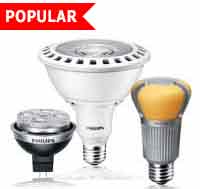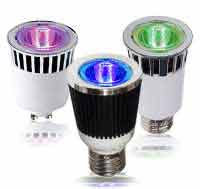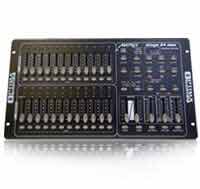In the Spot Light #4: Low Pressure Versus High Pressure Sodium Lamps
 In the next installment of my ‘In the Spotlight Series’, I will look at low pressure and high pressure sodium bulbs and how they differ. These two lamps have been a source of confusion for some our customers, so let’s get started clearing the air regarding these two lamps. Low pressure sodium (LPS) and high pressure sodium (HPS) bulbs belong to the HID lamp family, which means that they produce light by exciting gasses and vaporized metals with electrical current to sufficiently excite them and produce light. The composition of LPS and HPS lamps is somewhat similar, they both contain a noble gas and solid sodium. HPS lamps may contain additional metals and have a slightly different construction than LPS lamps, but the specifics of these differences are not necessary for the purposes of this article. What really sets LPS and HPS lamps apart is the qualities of their light and the size of their lamps. LPS lamps are known for their very yellow or orange light, these lamps are most commonly used in certain commercial and residential outdoor applications and street lighting. LPS bulbs are widely used because they are very efficient and have a very high luminous efficacy of around 200w/lm. One of the reasons for LPS bulbs’ efficiency is that nearly all of the light produced is easily visible by the human eye, close to zero ultraviolet or infrared light is produced. LPS lamps can be very large, reaching beyond 3.5ft in length. It is for this reason that sometimes streetlights or highway light fixtures are very large.
In the next installment of my ‘In the Spotlight Series’, I will look at low pressure and high pressure sodium bulbs and how they differ. These two lamps have been a source of confusion for some our customers, so let’s get started clearing the air regarding these two lamps. Low pressure sodium (LPS) and high pressure sodium (HPS) bulbs belong to the HID lamp family, which means that they produce light by exciting gasses and vaporized metals with electrical current to sufficiently excite them and produce light. The composition of LPS and HPS lamps is somewhat similar, they both contain a noble gas and solid sodium. HPS lamps may contain additional metals and have a slightly different construction than LPS lamps, but the specifics of these differences are not necessary for the purposes of this article. What really sets LPS and HPS lamps apart is the qualities of their light and the size of their lamps. LPS lamps are known for their very yellow or orange light, these lamps are most commonly used in certain commercial and residential outdoor applications and street lighting. LPS bulbs are widely used because they are very efficient and have a very high luminous efficacy of around 200w/lm. One of the reasons for LPS bulbs’ efficiency is that nearly all of the light produced is easily visible by the human eye, close to zero ultraviolet or infrared light is produced. LPS lamps can be very large, reaching beyond 3.5ft in length. It is for this reason that sometimes streetlights or highway light fixtures are very large.HPS lamps are used most often in outdoor applications such as street lamps, parking lots, and flood lighting and horticultural applications, where color rendering is not a priority. HPS lamps are efficient as far as HID lamps go, but do not have the quite the luminous efficacy of LPS lamps. Though HPS lamps are not as efficient as LPS lamps, they have excellent light spans with life hour ratings of 16,000 – 24,000 hours and are also typically smaller in size. The higher atmospheric pressure of the HPS lamps allows its contents to be assembled in a smaller lamp, and thus allowing the lamp to be installed in smaller fixtures, making it easier and less cumbersome to install and use. HPS lamps’ color temperatures are typically a yellowish-white light.
BulbAmerica has a great selection of both LPS and HPS bulbs to satisfy your lighting needs. Check out what we have to offer. As always, do not hesitate to leave a comment or question on the blog or give us a call at 1-877-622-0897.

























Stay in Touch